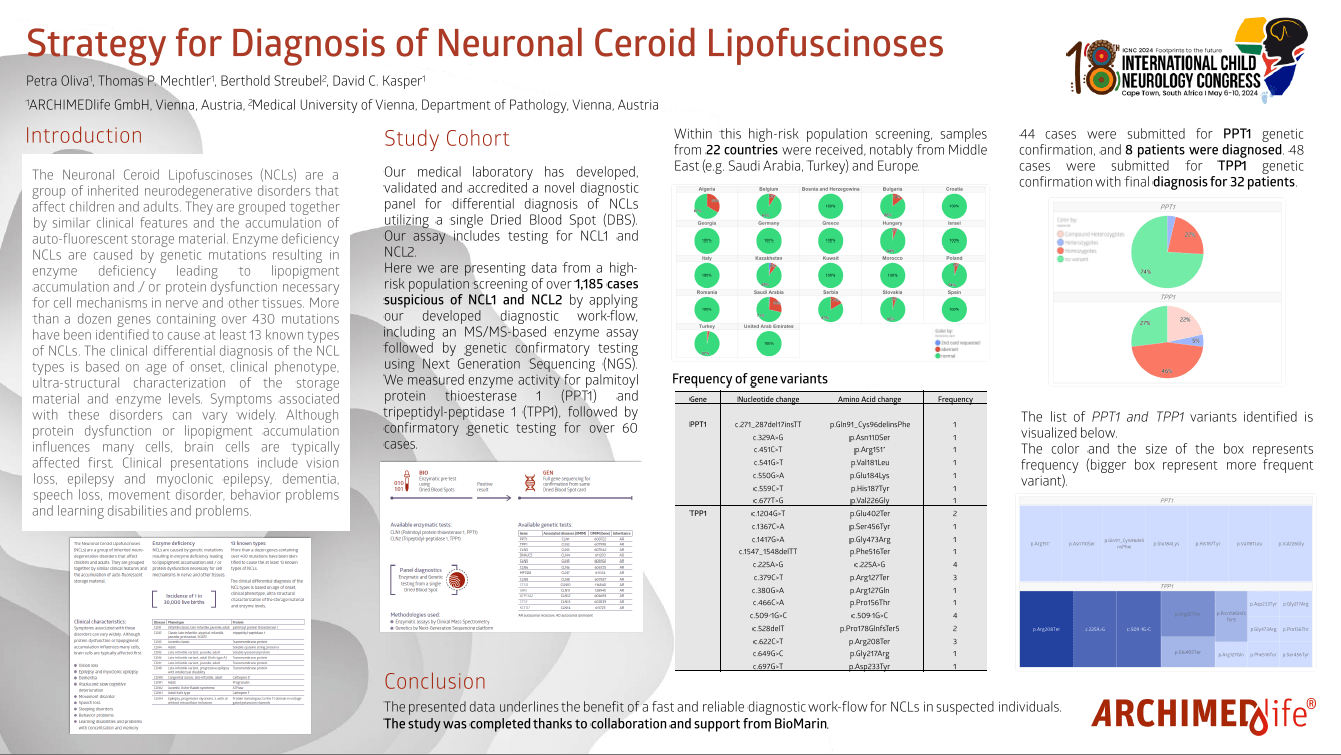Strategy For Diagnosis Of Neuronal Ceroid Lipofuscinoses
The Neuronal Ceroid Lipofuscinoses (NCLs) are a group of inherited neurodegenerative disorders that affect children and adults. They are grouped together by similar clinical features and the accumulation of auto-fluorescent storage material. Enzyme deficiency NCLs are caused by genetic mutations resulting in enzyme deficiency leading to lipopigment accumulation and/or protein dysfunction necessary for cell mechanisms in nerves and other tissues. More than a dozen genes containing over 430 mutations have been identified to cause at least 13 known types of NCLs. The clinical differential diagnosis of the NCL types is based on the age of onset, clinical phenotype, ultra-structural characterization of the storage material, and enzyme levels. Symptoms associated with these disorders can vary widely. Clinical presentations include vision loss, epilepsy and myoclonic epilepsy, dementia, speech loss, movement disorder, behavior problems, and learning disabilities and problems. Our medical laboratory has developed, validated, and accredited a novel diagnostic panel for differential diagnosis of NCLs utilizing single Dried Blood Spot (DBS). Our assay includes testing for NCL1 and NCL2. Here we are presenting data from high-risk population screening of over 1,100 cases suspicious of NCL1 and NCL2 from over 22 countries where we measured enzyme activity for palmitoyl protein thioesterase 1 (PPT1) and tripeptidyl-peptidase 1 (TPP1), followed by confirmatory genetic testing. 44 cases were submitted for PPT1 genetic confirmation, and 8 patients were diagnosed. 48 cases were submitted for TPP1 genetic confirmation with the final diagnosis for 32 patients.
Petra Oliva
ARCHIMEDlife
Austria
Thomas P. Mechtler
ARCHIMEDlife
Austria
Berthold Streubel
University of Vienna
Austria
David C. Kasper
ARCHIMEDlife
Austria

Petra Oliva
ARCHIMEDlife
Austria